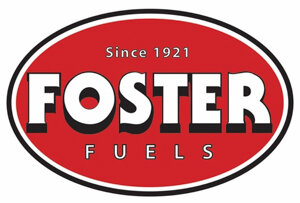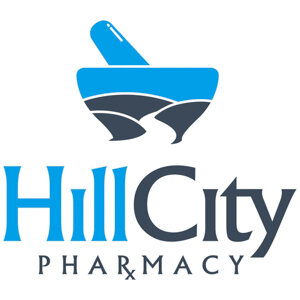Billboard Advertising
Billboard advertising has been a popular form of outdoor advertising for over a century. It is an effective way to reach a large audience, as billboards are strategically placed in high-traffic areas such as highways, busy intersections, and city centers.
Billboards are usually large, eye-catching displays that feature a brief message or image. They can be static or digital, and can be illuminated for better visibility at night. With the rise of digital billboards, advertisers can now display multiple ads on the same billboard, maximizing exposure and reducing costs.
At SouthEastern Media, we believe that billboard advertising can be a powerful tool for businesses looking to increase brand awareness and drive sales. With the right message and placement, billboards can capture the attention of potential customers and leave a lasting impression. In this article, we will explore the benefits of billboard advertising and provide tips on how to create an effective billboard campaign.
What is Billboard Advertising?
Billboard advertising is a form of outdoor advertising that involves displaying advertisements on large boards that are typically placed along highways, busy streets, and other high-traffic areas. These boards are designed to be highly visible and eye-catching, making them an effective way to promote products, services, and events to a wide audience.
Billboard advertising has been around for over a century, and it remains a popular form of advertising today. In fact, according to the Outdoor Advertising Association of America, billboards reach 93% of Americans every day, making them one of the most effective ways to reach a large audience.
There are many different types of billboards, including traditional static billboards, digital billboards, and mobile billboards. Traditional billboards feature static images and text, while digital billboards can display dynamic content such as videos and animations. Mobile billboards are typically mounted on trucks or trailers and can be driven to different locations to reach different audiences.
Why Use Billboard Advertising?
Billboard advertising is a powerful marketing tool that can help businesses of all sizes reach a large audience. In this section, we'll explore the benefits and costs of billboard advertising to help you determine if it's the right choice for your business.
Benefits of Billboard Advertising
One of the primary benefits of billboard advertising is its ability to reach a large audience. Billboards are typically placed in high-traffic areas, such as highways, busy streets, and public transportation hubs, where they can be seen by thousands of people each day. This makes billboard advertising an effective way to raise brand awareness and increase visibility.
Another benefit of billboard advertising is its ability to target specific demographics. For example, if you're advertising a product or service that's geared towards young adults, you can place your billboard near college campuses or trendy neighborhoods. This can help you reach your target audience more effectively and increase the chances of converting them into customers.
Billboard advertising is also a great way to reinforce other marketing efforts. By using the same messaging and branding on your billboards as you do in other marketing channels, you can create a cohesive brand identity that resonates with your target audience.
Costs of Billboard Advertising
The cost of billboard advertising varies depending on a number of factors, including the size and location of the billboard, the length of the campaign, and the level of competition in the area. Generally, billboards in high-traffic areas are more expensive than those in less busy areas.
However, despite the higher cost, billboard advertising can be a cost-effective marketing tool. Because billboards are seen by so many people each day, the cost per impression is often lower than other forms of advertising, such as TV or radio ads.
Another cost to consider is the cost of design and production. You'll need to work with a graphic designer to create a billboard that's eye-catching and effective, and you'll also need to pay for the production and installation of the billboard itself.
Overall, while billboard advertising may not be the right choice for every business, it can be an effective way to reach a large audience and increase visibility. By weighing the benefits and costs, you can determine if billboard advertising is the right choice for your business.
Designing Your Billboard
When it comes to designing your billboard, it's important to remember that you have a limited amount of space to work with. You want to make sure that your message is clear and easy to read, while also being eye-catching enough to grab the attention of drivers and pedestrians alike. In this section, we'll go over some tips for creating a billboard design that works.
Creating an Eye-Catching Design
One of the most important aspects of your billboard design is making sure that it's eye-catching. You want to use bold colors and graphics that will stand out and grab people's attention. Avoid using too much text, as this can be difficult to read from a distance. Instead, focus on using images and graphics that convey your message quickly and effectively.
Choosing the Right Fonts and Colors
When it comes to choosing fonts and colors for your billboard, it's important to keep things simple. Stick to easy-to-read fonts like Arial or Helvetica, and avoid using too many different fonts in one design. You also want to choose colors that are easy to read from a distance, such as black or white text on a bright background.
Another tip is to use contrasting colors to make your design stand out. For example, if you're using a blue background, consider using yellow or white text to make it pop. You can also use color psychology to your advantage, choosing colors that evoke certain emotions or feelings in your target audience.
Including a Clear Call-to-Action
Finally, it's important to include a clear call-to-action in your billboard design. This could be a phone number, website, or simple message that encourages people to take action. Make sure that your call-to-action is prominently displayed and easy to read, so that people know exactly what they need to do next.
By following these tips, you can create a billboard design that is both eye-catching and effective. Remember to keep things simple, use contrasting colors, and include a clear call-to-action to get the best results.
Choosing the Right Location
When it comes to billboard advertising, choosing the right location is crucial for the success of your campaign. In this section, we will discuss some important factors to consider when selecting a location for your billboard.
Consider Your Target Audience
Before choosing a location, it's important to consider your target audience. Who are you trying to reach with your message? What are their interests, demographics, and behaviors? Once you have a clear understanding of your target audience, you can select a location that will maximize your reach and impact.
Assess Traffic Patterns and Visibility
Another important factor to consider when choosing a location is traffic patterns and visibility. You want to select a location that will get your message in front of as many people as possible. Look for areas with high traffic volume, such as highways, intersections, and busy city streets. You also want to consider the visibility of your billboard. Make sure it's easily visible from a distance and not obstructed by trees, buildings, or other objects.
Negotiating with Property Owners
Once you've identified a potential location for your billboard, it's time to negotiate with the property owner. This can be a complex process, but it's important to approach it with a clear strategy in mind. Be prepared to discuss the terms of the lease, including the length of the contract, the cost, and any restrictions or requirements. You may also want to consider offering incentives, such as a discount for a longer lease or a bonus for signing up multiple locations.
Overall, choosing the right location for your billboard is a critical step in the advertising process. By considering your target audience, traffic patterns, and negotiating with property owners, you can select a location that will maximize your reach and impact.
Measuring the Success of Your Billboard Advertising
Tracking Metrics
To measure the success of your billboard advertising, it's essential to track the right metrics. We recommend tracking the following metrics to get an accurate picture of your campaign's success:
Impressions: The number of people who see your billboard
Engagement: The number of people who interact with your billboard, such as visiting your website or calling your business
Conversion: The number of people who take action after seeing your billboard, such as making a purchase or signing up for a service
Analyzing ROI
Analyzing your return on investment (ROI) is crucial to understanding the effectiveness of your billboard advertising. To calculate your ROI, you'll need to determine the total cost of your campaign and compare it to the revenue generated from the campaign. This will give you an idea of whether your campaign was profitable or not. Keep in mind that ROI can take time to fully realize, so be patient and monitor your results over time.
Making Adjustments for Future Campaigns
Based on your metrics and ROI analysis, you may need to make adjustments for future billboard advertising campaigns. For example, if you find that your conversion rate is low, you may need to adjust your messaging or targeting to better reach your audience. By analyzing your results and making adjustments, you can improve the effectiveness of your billboard advertising over time. Overall, measuring the success of your billboard advertising is essential to ensuring that your campaigns are effective and profitable. By tracking the right metrics, analyzing your ROI, and making adjustments for future campaigns, you can maximize the impact of your billboard advertising and achieve your marketing goals.













